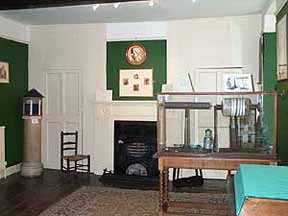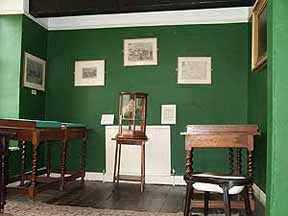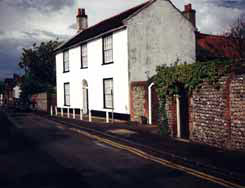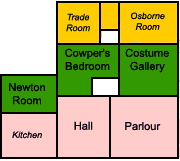|
THE MUSEUM PEOPLE
WORKS ORCHARD SIDE GARDENS |
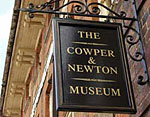 |
|
The Cowper and Newton Museum
|
||
|
Virtual Tour: Cowper's Bedroom
|
||
|
||
|
||
| Cowper moved from Olney to Weston Underwood, less than half a mile away, in 1786 and although the distance was short it brought the poet a considerable change in scenery and society.
The setting of his new home at Weston lodge was rural and his new neighbours, aristocrats and landed gentry, provided refined company that he hadn't found in Olney. His financial position also improved a little. As a friend of the Throckmorton family Cowper was given leave to wander their estate, supposedly designed by "Capability" Brown, and enjoyed ambling amongst the trees and resting in The Alcove, where he wrote. The year of his move was however, marked by the death of William Unwin whom Cowper looked upon as son and brother. The loss sent Cowper into a spiral of depression and in 1787 it was Mrs Unwin who foiled what was his third suicide attempt, cutting the rope from around his neck. Recovering from his moments of darkness, Cowper's time at Weston was filled with providing book reviews for his publisher, corresponding with friends and family and working on his translation of Homer's Iliad. After a short visit, Lady Hesketh left Weston Underwood in 1795 and engineered Cowper's removal to Norfolk. She was not above threatening to place the poet at Dr Willis', which effectively meant incarceration in a private madhouse, and perhaps not surprisingly the move to Norfolk was arranged. Though his time at Weston Underwood was at times unhappy for the poet, he was saddened at having to leave. In the last week of his residency, he wrote two sets of lines on the panel of his window shutter.
Cowper's fears proved well founded. Following the move eastwards he and Mary Unwin lived in a succession of houses and each new location failed to lift their spirits. Their first stay was at an old Rectory at North Tuddenham, set in the heart of the Norfolk countryside. After three weeks they had moved on to Mundesley. In this quiet village just south of Cromer Cowper claimed to be living "a mere animal life, which to a man of mind naturally active, is of itself a misery". |
||
|
||
| From Mundesley the pair moved to Dunham lodge where, despite the efforts of John Johnson to cheer him, Cowper would answer enquiries after his health with "a mournful groan".
By the time the two moved to East Dereham, Mary Unwin's health had deteriorated considerably, and she died on December 1796. After the burial, which Cowper did not attend, he never spoke of her again. In his final years while finishing the Iliad Cowper was plagued by voices when awake and dreams when asleep. The dreams he described as nightmares of contempt, horror, shame, ignominy and torture. He declined into a mire of self-loathing and paranoia, yet he worked on, finishing his translation of the Iliad in 1799. He died shortly afterwards on 25 April 1800. |
||
|
||
|
|
||
|
|
||

